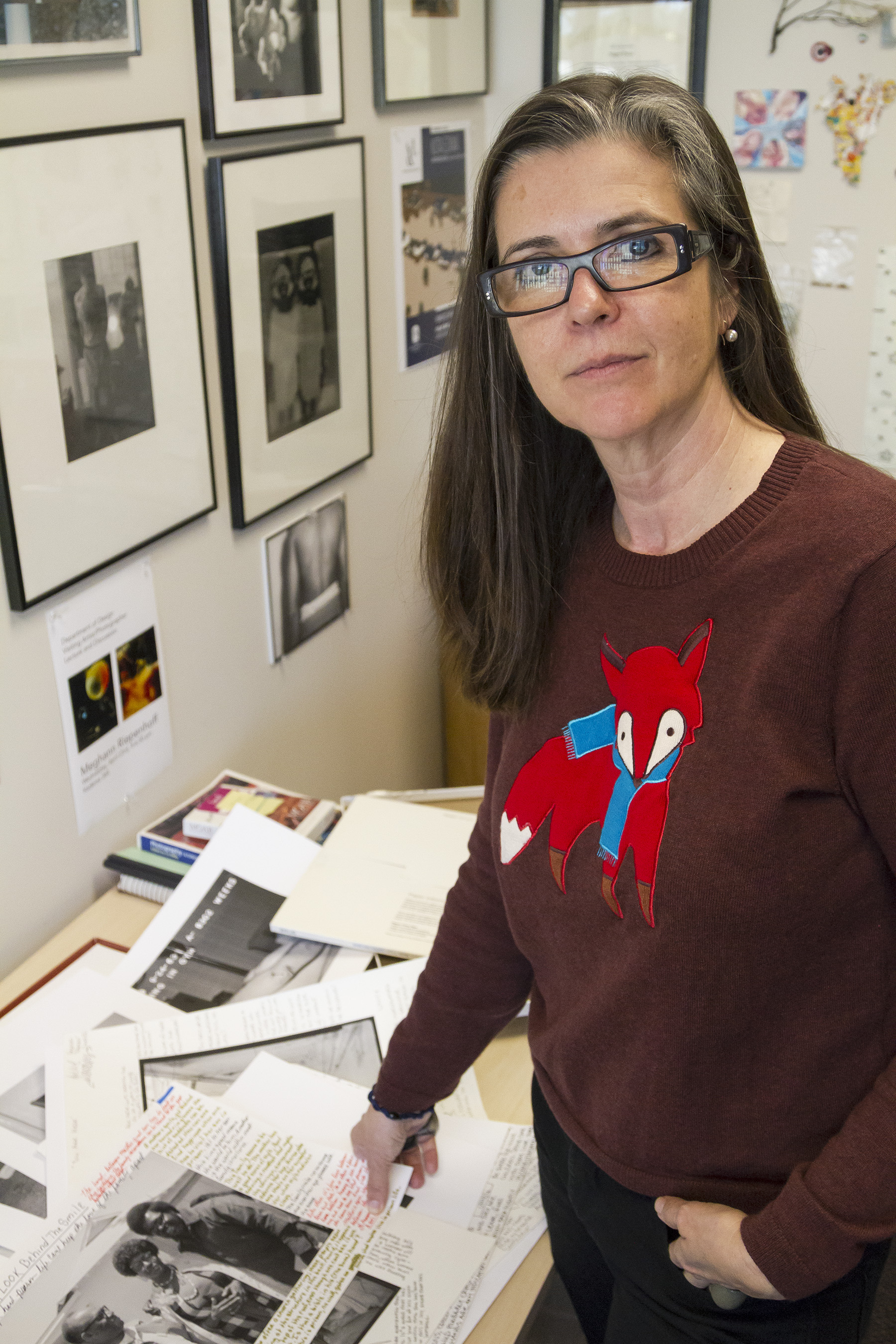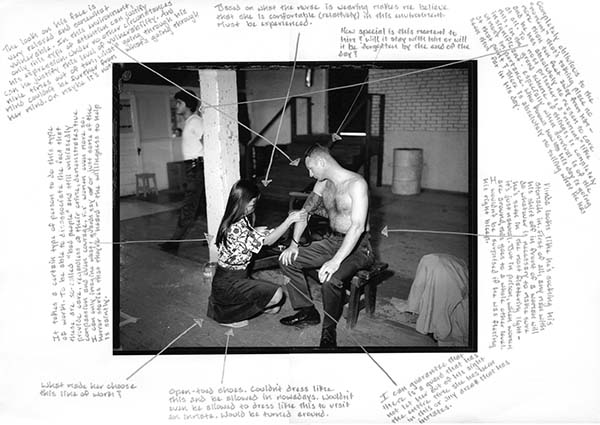 Sac State Professor Nigel Poor is combing through thousands of photos taken at San Quentin. (Sacramento State/Craig Koscho)
Sac State Professor Nigel Poor is combing through thousands of photos taken at San Quentin. (Sacramento State/Craig Koscho) The image of a nurse taking a prisoner’s blood pressure elicited several comments from one inmate, including, “I can guarantee that there is a guard that has not let her out of his sight.”
The image of a nurse taking a prisoner’s blood pressure elicited several comments from one inmate, including, “I can guarantee that there is a guard that has not let her out of his sight.”It all started about four years ago when Sacramento State photography Professor Nigel Poor was shown one box of photo negatives at San Quentin State Prison. Now she is in the midst of a huge project to organize, scan, and produce prints from several thousand negatives taken at the prison between 1935 and 1986.
In addition to its historical significance, the project is using inmates to help interpret the images and provide better understanding about their lives.
The photos were taken by corrections officers to document what was happening at the prison – from mundane situations such as weddings and Mother’s Day visits to more disturbing occurrences such as assaults, suicides, and murders.
Poor and a fellow photography professor, Doug Dertinger, began teaching the History of Photography in 2011 at San Quentin through the state’s Prison University Project. One day while talking with prison public information officer Lt. Sam Robinson, Poor expressed interest in some aerial photos of the prison on Robinson’s desk.
“His response was, ‘If you like that, you’re going to love this,’ ” Poor says. Robinson produced a banker’s box filled with negatives. “I immediately knew this was a treasure trove,” Poor says.
And there were five more boxes of the same.
Poor estimates there are tens of thousands of negatives, which she is organizing, scanning, and in some cases, making prints of. “It’s a huge project, and I’m not quite sure when it’s going to be done,” Poor says. “I’m starting to think there are many more than I can ever deal with.”
Her task now is threefold: to categorize and store the material to prevent damage, to make prints of the ones that look interesting, and to engage some of the inmates in the process as a way of understanding the images.
Poor is giving her students – selected inmates – copies of the photos and encouraging them to write on them with their view of what is happening.
“In some ways the photos can be somewhat unemotional because they’re a very detached view of things,” Poor says. “But the men’s writing really changes that and makes them more accessible to us.”
Some of the observations are matter-of-fact. In a photo of what apparently is a nurse taking an inmate’s blood pressure, one of Poor’s students notes how the woman is dressed. “Open-toed shoes. Couldn’t dress like this and be allowed in nowadays.” Elsewhere on the photo, the same student writes: “It takes a certain type of person to do this type of work. To be able to disassociate the fact that these are so-called ‘bad people’ and still unbiasedly provide care, regardless of their crime, demonstrates true compassion and even courage.”
“The men are, in some ways, acting like our guides to help us understand what’s happening in the photographs,” Poor says.
She hopes the work will help the men with their rehabilitation – a process Poor views as a psychological journey to confront one’s darkest moments. “Most of us are never forced to do that,” Poor says. “Likely because we’ve never done some of the things they have, but everyone has a dark side.”
At Sacramento State, Poor teaches History of Photography, Studio Photography, and The Photographic Self. She also has a studio in San Francisco.
In addition to creating a photo archive for the prison, Poor has shown the images at selected exhibits and is working on a new one to be held at Dominican College in San Rafael next year.
The San Quentin project has not only revealed the inner workings of the prison, but also had an impact on Poor herself.
“I think it’s made me a lot more compassionate,” she says. “It’s made me more interested in prison reform, and also more interested in victims’ rights too. I always remember that there are victims who are part of all these stories, and it’s important not to forget that.”
Poor isn’t sure how long she’ll continue with the work. She gets some support from Sacramento State, but no resources from the prison or the state. Still, she has no plans at this point to give it up. “It’s a labor of love and a belief that these negatives are of historic importance and they need to be taken care of.”
For more information and images of Poor’s San Quentin project, visit nigelpoor.com/project/san-quentin. – Craig Koscho
